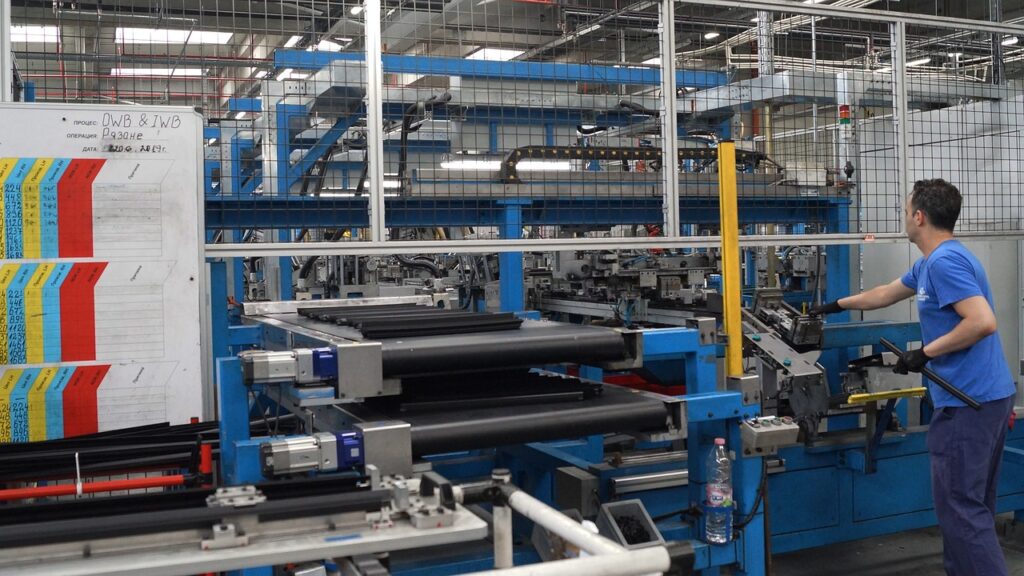Inventory crisis: stock held by UK firms doubles
23rd November 2022

New industry data reveals that manufacturers are holding double the amount of stock compared to pre-pandemic levels as the world’s supply chain woes take on a new form. Unleashed’s Manufacturers Health Check report used data from its inventory management software to track how SMEs in the UK have fared in 2022. The report shows businesses forced to stockpile huge quantities of goods as they navigate delays and shortages, against a background of rising inflation.
The analysis of more than 4,500 SMEs paints a picture of manufacturer health by examining four main data points: the value of stock on hand, Gross Margin Return on Inventory (GMROI), fulfilment days, and the price paid for goods purchased.
Overall, stock on hand levels for manufacturers in the UK jumped by 99.7%, from an average of £365,736 in Q3 2019 to £730,681 in Q3 2022, while GMROI dropped from 2 to 0.9 in the same period, and fulfilment times fell from 20 days to around two weeks.
Tough inventory situation
Meanwhile manufacturers are paying 10.24% more for their goods now compared to the start of 2022.
“What started as a supply chain crisis appears to have evolved into an inventory crisis at the individual business level,” says Gareth Berry, CEO of Unleashed. “Yes we’ve seen shipping times and prices ease, but that’s at the expense of firms who are forced to hold far more stock just to stay operational.
“It’s a tough situation for manufacturers that will present real cash flow pressures. Managing those stock levels down in the coming months will be a delicate task.”
Crazy lead times
Noah Warren, CEO of UK bicycle manufacturer Temple Cycles, says the impact on his business has been considerable: “One of the biggest problems we’ve had is lead times going exponentially crazy. So we’ve had to move away from a just in time stock model to just in case. The only way we could be in stock is to invest more money in it. But you can’t do that indefinitely.”
Digging deeper, it’s clear that there is variation across industries, with some industries faring better (and worse) for each data point featured in the research.
The highest percentage change in the average value of stock on hand between Q3 2019 and Q3 this year was the plastics and rubber sector – which saw an average increase of 180%. This was followed by energy and chemicals (up 174%), and the sports and entertainment sector which recorded an average increase of 123%.
In fact, all industries featured in this research were holding an increased value of stock this year compared to 2019, with the exception of manufacturers in the building and construction sector.
Decline in GMROI
When looking at GMROI, it’s clear that firms are feeling the impact of holding more stock, with the majority of firms seeing a drop in overall profitability when looking at this metric specifically.
Apart from the food sector, which lifted GMROI 93.69%, all sectors in the UK saw a decline in overall GMROI with clothing firms (down 81.8%), plastic and rubber products (down 81%) and energy and chemicals (down 62%) seeing the biggest declines.
Six of the nine industries featured in this research have been successful in cutting lead times over the past three years, with energy and chemicals (down 74.1%), automotive (down 65.6%) and food (down 48.6%).
But there are still sectors struggling to pull fulfilment times back to pre-pandemic levels, most notably the plastic and rubber products sector where the average fulfilment days are up more than double – to 29.3 days (up 266.8%).
Supply and demand instability
Daniel Myers, Director at Plastock, a material solution provider to retail and display markets, adds: “We have witnessed first-hand the significant supply and demand instability of materials, going from peaks of very stable supply to huge surges in demand and this is having a significant impact on costs.
“Price increases as much as 45% presented us with fairly significant issues, and then with the cost of those materials increasing week by week people started panic buying any available stock. So it makes it really difficult to manage stock – it’s unprecedented.”
CLICK HERE to read the full research.

